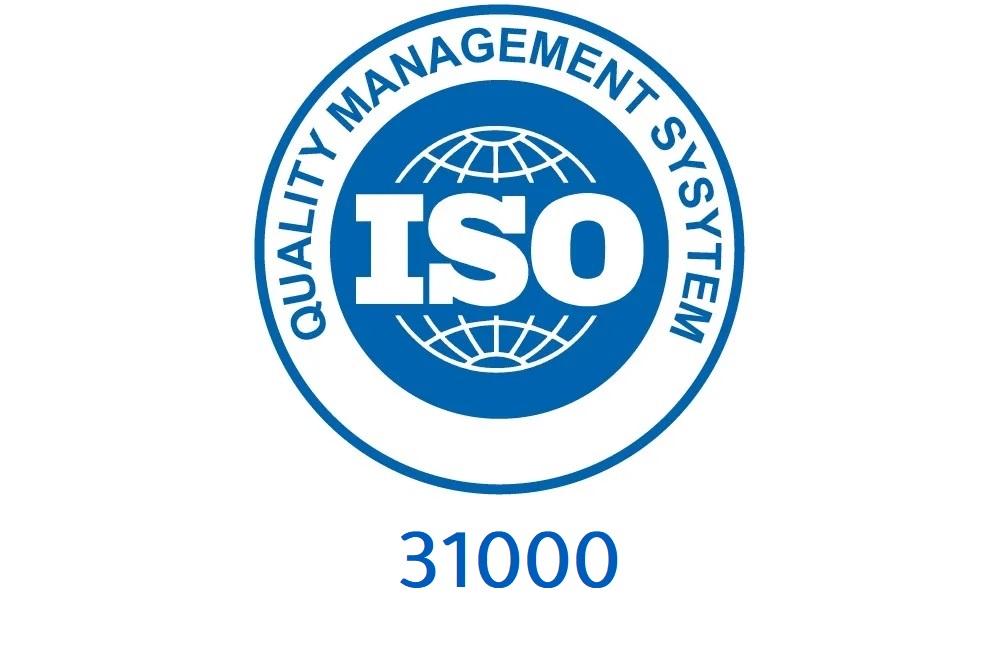ISO 31000 certification
ISO 31000 provides standards and guidance to help organizations understand, assess and manage risk. ISO 31000 defines a number of ways organizations can identify, assess and manage their risks. The standard also makes recommendations on how to communicate risk assessments and strategies to key stakeholders within an organization or supply chain.

What is the importance of ISO 31000 certification?
ISO 31000 provides standards and guidance to help organizations understand, assess and manage risk. ISO 31000 defines a number of ways organizations can identify, assess and manage their risks. The standard also makes recommendations on how to communicate risk assessments and strategies to key stakeholders within an organization or supply chain.
How important is ISO 31000 to organizations today?
By adding a risk analysis in the main business processes, one can adhere to the steps that ensure that the expected problems do not occur or the steps that respond if they do occur. Time and money can be very crucial. A general risk assessment process is defined in the ISO 31000 regulation. This approach can be applied to all types of risks by any type of organization.
For an organization that will effectively implement the ISO 31000 standard, risk management will provide the following advantages:
– Creates and protects value and is an integral part of all organizational processes.
– Part of decision-making.
– Explicitly addresses uncertainty.
– Systematic, organized and timely.
– Based on the best available information.
Therefore, it is also important to know how ISO certification is obtained to ensure quality .
Percentage offers you the service of implementing and applying the ISO 31000 standard up to the final review and obtaining an international certificate.
Request a consultation now!
4 good reasons to adopt the ISO 31000 standard for risk management
1. the International Organization for Standardization has 31,000 accessible structures, including:
Definitions of simple terms, with a separate reference document in ISO 31000 manual 73 covering additional risk vocabulary. The principles section describes the goal and characteristics of risk management in the entire organization. The focus is on risk management as a tool for creating and protecting value, recognizing the impact of human and cultural values and the need for customization to suit your business. It presents risk management as an integrated, structured, comprehensive and dynamic branch, which uses the best information and focuses on continuous improvement.
The framework Department has strong links to management and decision-making, where leadership and commitment lie at its core. As expected from the quality standard, it focuses on the integration, design, implementation, evaluation and improvement of risk management throughout the organization.
The risk process, which is a familiar contextual mainstay, the elements of assessment and treatment, is surrounded by communication, monitoring and reporting activities.
The guide briefly addresses the” why”(principles),” how”(framework) and” what ” (process) of risk management.
2-ISO 31000 supports risk sharing across the entire company:
The International Organization for Standardization describes ISO 31000 as ” applicable to all organizations, regardless of their type, size, activities and location, covering all types of risks. It has been developed by a group of stakeholders and is designed for use by anyone who manages risk, not just professional risk managers.
It balances risk mechanisms (process steps) with the commercial imperative of raising risks to the level of strategy and goals.
It is non – partisan with regard to risk Technologies, which it covers instead-these are covered by the very useful IEC/ISO 31010 standard. Using the IEC/ISO 31010 standard, non-professionals can learn, and the institute can discuss the pros and cons of various risk assessment methods, without complicating the basic messages “why”,”how” and”what” of ISO 31000.
And in a rapidly changing world, the guide suggests an integrated view of risks, providing a platform for making informed decisions.
3-ISO 31000 can be easily adapted to your business:
Unlike other ISO standards, ISO 31000 provides guidance rather than a certification platform. Since each company has different goals, structures and a competitive position, there cannot be a one-size-fits-all approach to risk approaches. ISO 31000 provides a single standard that can be applied to all parts of the business, regardless of the industry sector, type or location.
Although it is brief, the scale is not light. Its value lies in the fact that it is applicable to any part of the enterprise, both small and large. Projects, programmers, business units, departments and functions can apply the ISO 31000 norm in their own way while fulfilling the general requirements of business in the field of risk management.
Each organization has its own unique risk profile, which makes the flexibility of ISO 31000 an important reason for its widespread adoption around the world.
4. it is easy to implement the ISO 31000 rule.
As the leading provider of risk software, we understand how important it is to include risk management and analysis software (Predict!) On the principles, framework and procedures of ISO 31000.
ISO 31000 is designed to help organizations effectively manage their risks and eliminate or minimize the impact of uncertain events. It is well suited for any company that needs to protect assets, minimize losses, protect people and ensure compliance with requirements

